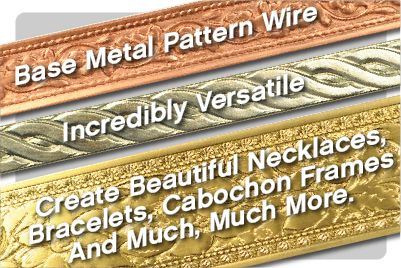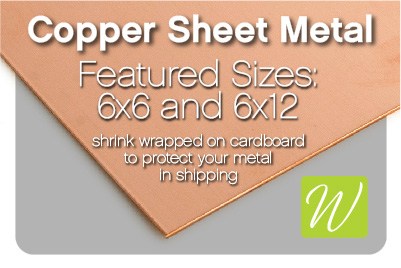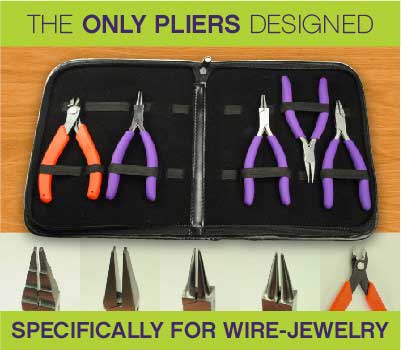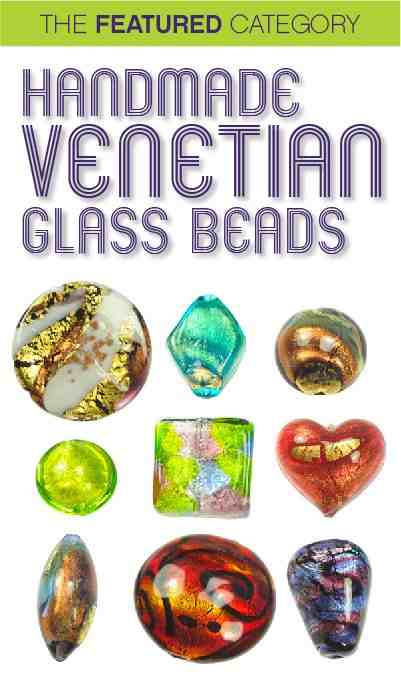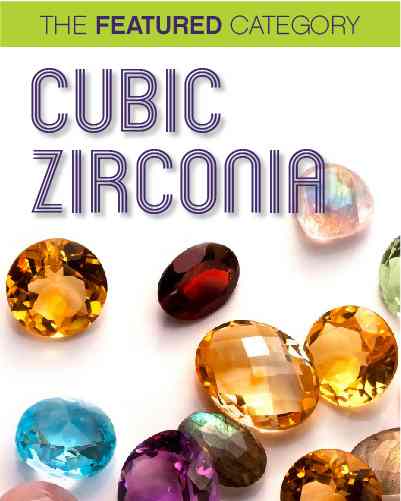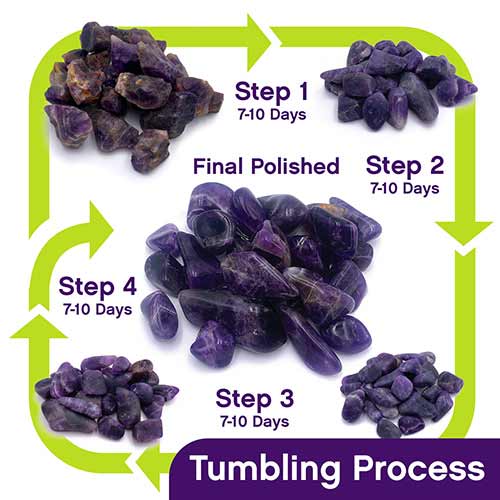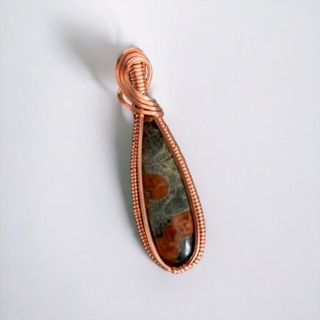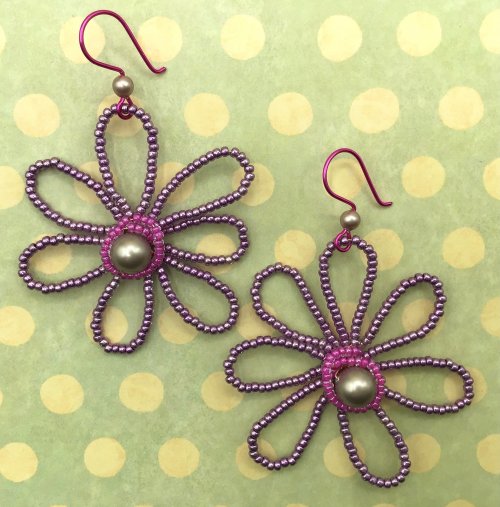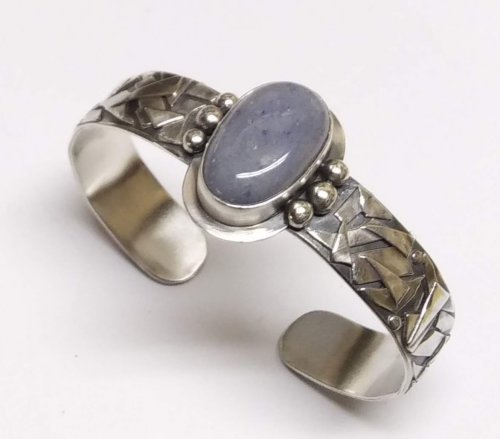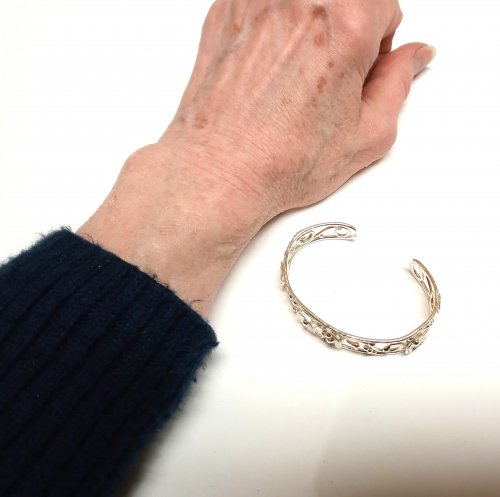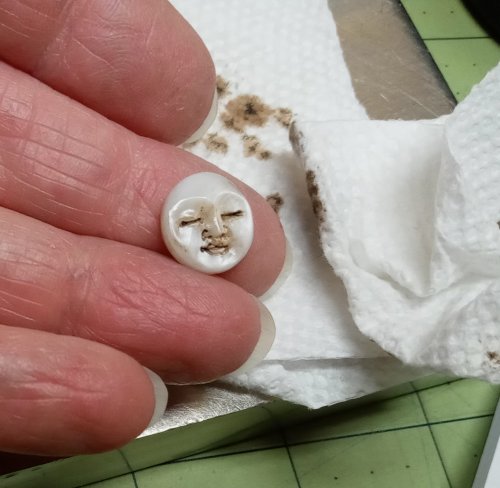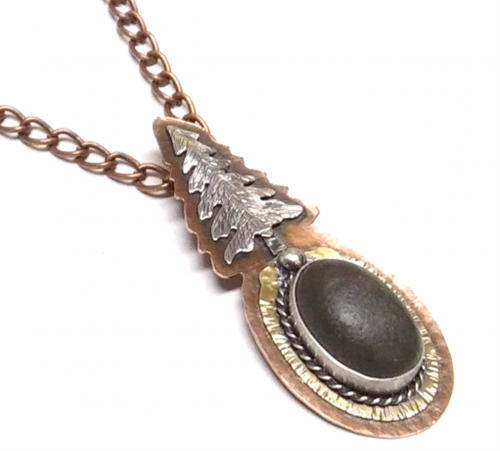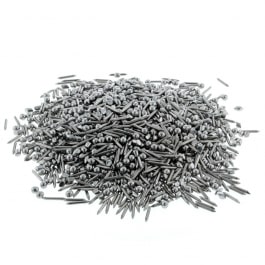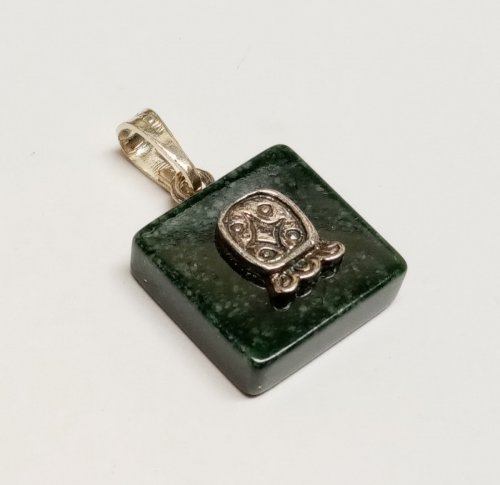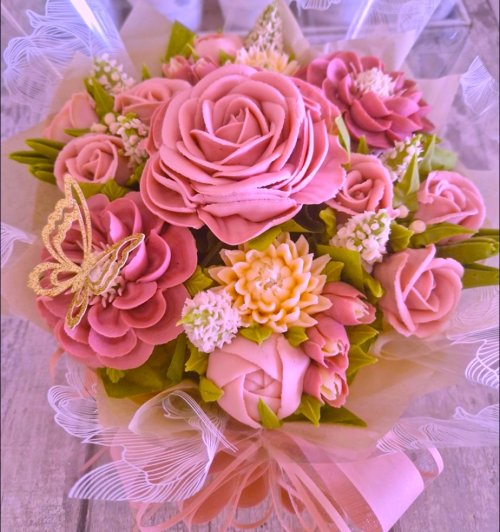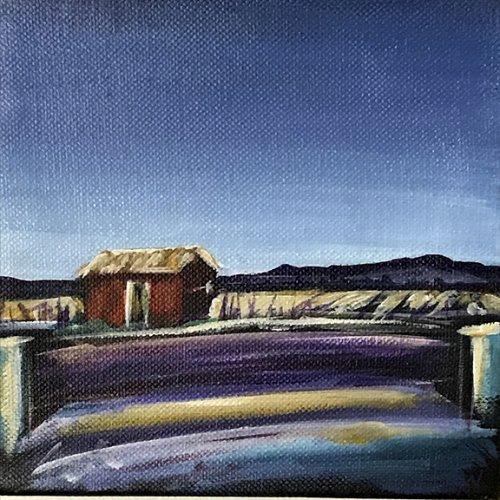
Hi9 Dale, I've learned a lot watching your videos and reading these tips. Thanks! Thank you, also, for featuring some of my pieces in your weekly gemstone articles. My question has to do with framed freeform cab pendants. I've been intimidated about trying to wrap them (or structured ones using that style) because I can't figure out how to determine where the binding wires should be placed. Is there a basic concept I'm missing? Seems like it would be logical, but... I'd appreciate your help with this. Thanks, Jackie
Hi Jackie, first I have to ask, do you have Beginner DVD #2? http://www.wire-sculpture.com/jewelry-making-dvds/Beginner_Series_Part_2-7436-126.html The reason I ask is because the main project on that DVD is how to wrap a freeform cabochon, taking about "where" to place wraps and why, which would completely answer your question with both visual instruction as well as all of the extra stuff I talk about in classes. (Rose, would you please insert the cab photo here - thanks!)
Basically wherever you want to make a "pull" (pull a wire from the frame onto the stone) you need to do it immediately after a wrap, BUT you do not have to make a pull wherever there IS a wrap. When you look at a freeform cab and decide what will be the top (where the bail will be) then you have to decide where you "need" to make pulls to hold the stone securely in its frame as well as how much wire you want on the stone. Thinking about this, what are some of the features you do not want to cover up? What are some of the features that you would like to enhance by "framing" with a pull wire? for practice, work on a harder stone such as an agate and make the first pulls on the back of the piece, experimenting with different sized pliers, like chain nose for shallow pulls and flat nose for deeper ones. Your results will help you decide which to use on the front of the stone. Seriously, my best advice is to get the DVD I mentioned above, within my directions I also give you the formulas to follow so you can make ANY size or shape cabochon into a stunning pendant!
- Answer contributed by cougar.
Hi9 Dale, I've learned a lot watching your videos and reading these tips. Thanks! Thank you, also, for featuring some of my pieces in your weekly gemstone articles. My question has to do with framed freeform cab pendants. I've been intimidated about trying to wrap them (or structured ones using that style) because I can't figure out how to determine where the binding wires should be placed. Is there a basic concept I'm missing? Seems like it would be logical, but... I'd appreciate your help with this. Thanks, Jackie
Wednesday's question...
Dale, I'm fairly new to this wire wrapping thing but I'm loving it...I wonder how you (and others) store their wire so you can find a particular gauge and if it's half round, round or square without having to hunt and study ends with a magnifier? Thanks for any help!
Tuesday's question...
What gauge and temper of wire is used for the intricate lacy curlicues commonly fill in the outlines of filigree components?
Monday's question...
I have talked to a number of people with nickel allergies, and want to make jewelry these folks can wear without having a reaction. What kinds of wires are nickel free, and how readily available are they?
Tuesday's question...
I read your information on choosing the size of a cup burr, but have never heard of that tool. What is a cup burr used for?
Monday's question...
What is the best gauge of wire to use to make rings? I decided to get into wire jewelry to add to my style of jewelry making and it's all new to me. Thanks, Pam
Thursday's question...
When making jump rings which is best to use hard or half hard wire?

